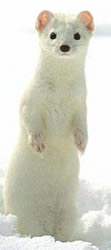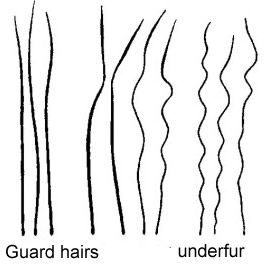
| MadSci Network: Zoology |
| Your seem to be asking two questions; the first has to do with how coat color changes, while the second deals with differences between different organisms. |

|
Hair color is determined by the extent to which the hair shaft incorporates pigment granules, produced by cells known as melanocytes. White hairs have no pigment. Once a hair is formed, it cannot change color – it
is dead (acellular) tissue. |
Changes in hair color, associated with the seasons are based on changes in melanocyte activity linked to the hair cycle. To produce a white winter coat, an animal simply "switches off" melanin production associated with hair. During telogen, the old hair falls out (sheds); during anagen, the new white grows in. The process is reversed in the spring. |
 |
| The differences in the coat colors are due to which
regions of the skin have active hair follicle-associated melanocytes and
which do not. |
Your second question has to do, I think, with the fact that there are different types of hairs that make up fur. There are guard hairs, that project out and are fairly stiff and there are the softer "downy" hairs that make up the underfur. It is the relative number of these two hair types that determines the "quality" of the fur - how it feels (and how warm or waterproof it is). Because of their different life styles and associated evolutionary adaptations, different organisms have different types of fur. |
 |
Try the links in the MadSci Library for more information on Zoology.